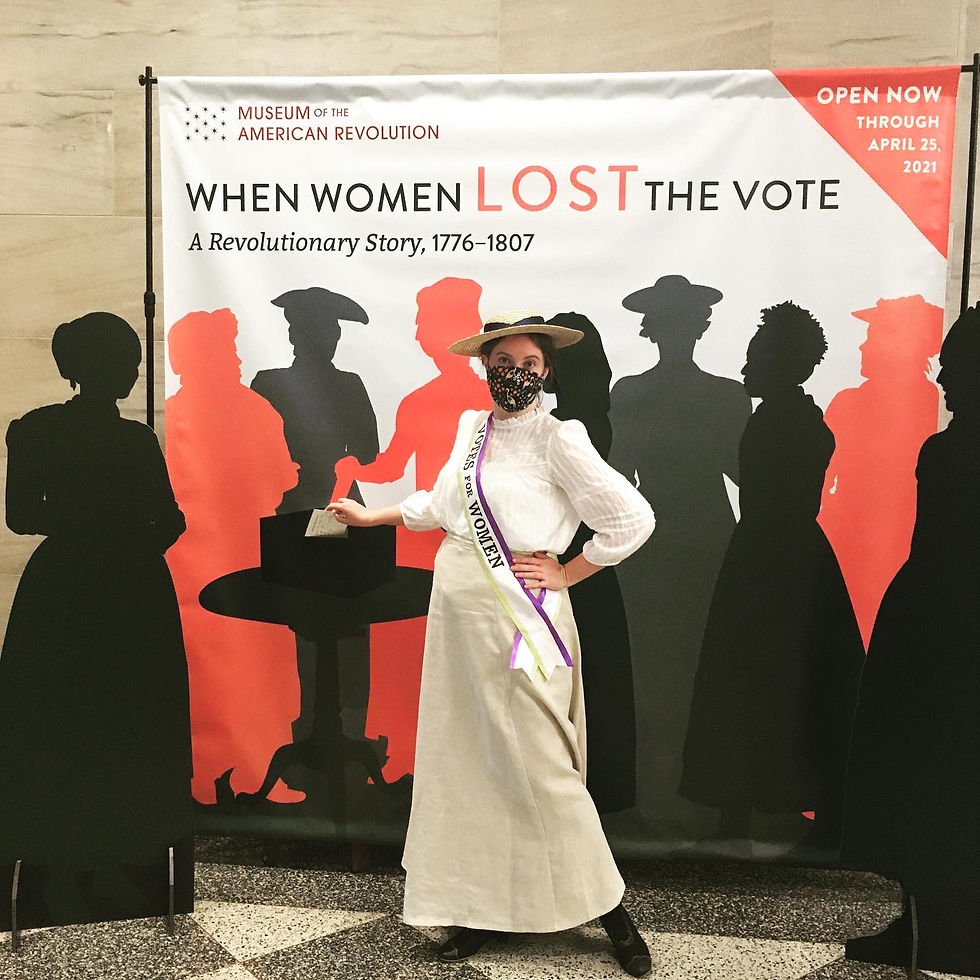Autumn is here, and so is my mail-in ballot. Along with these two things comes the Museum of the American Revolution’s newest exhibit, When Women Lost the Vote, which opens to the public on October 2nd, 2020. As I haven’t been to the museum since The Before Times, it was quite a treat to go in for the Press Preview.

And such a press preview! It’s considered common knowledge at this point that when Thomas Jefferson wrote that Americans were entitled to “Life, Liberty, and the Pursuit of Happiness,” he was referring to white, property-owning men only. But When Women Lost the Vote challenges that particular perception: was it so clear, in 1776, that only white, property-owning men were entitled to these rights? The exhibition details the role of women in the Revolutionary War and specifically delves into what we now call the New Jersey Exception, a little-known rule that enfranchised all free men and women to vote in the state of New Jersey from 1776 to 1807.
The first New Jersey state constitution, written in 1776, stated that “All inhabitants of this colony of full age, who are worth fifty pounds of proclamation money, clear estate in the same, and have resided in the country in which they claim to vote twelve months immediately preceding the election, shall be entitled to vote.” In 1790, the law was changed to clearly state “he or she,” officially enfranchising women.
In short: you need to be not a minor, have fifty pounds worth of property or currency, and to have lived in Jersey for a year. That’s it. That’s all you need.
But before you get too excited: in 1806, fifty pounds was about the cost of three horses, or eight cows. That’s not exactly pocket change! And most of the time, when a woman married, everything she owned immediately became the property of her husband. Furthermore, an enslaved person who was recently freed more often than not didn’t own anything remotely close to that sum of property.
Despite those restrictions, women voted. The museum has original poll books (with women’s names on the poll lists!) on display, proving that women in New Jersey happily took advantage of their rights enshrined in the state constitution.
In addition to all the Women’s Suffrage fabulousness, the museum has the famous “Remember the Ladies” letter from Abigail to John Adams on display. It’s the first time the letter has been in Philadelphia since Abigail first sent it to John! (Massachusetts hasn’t wanted to lend it out. Guess they’re still bitter about Super Bowl LII.)

If letters aren’t your style, perhaps some fabulous gowns are? One of the dresses on display is Deborah Sampson’s wedding dress. Sampson is famous for disguising herself as a man in order to fight in the Revolutionary War. She was injured and given an honorable discharge from the Continental Army.
All this and more treasures (one of America’s first ballot boxes from Deptford! A tavern sign with Thomas Jefferson painted on it from Ho-Ho-Kus!) are on display at the museum.
But most importantly, the museum asks you to consider that progress isn’t linear, and rights can be taken away as easily as they are given. Women in New Jersey could vote from 1776 to 1807, and then again in 1920. That’s 31 years of voting compared to 113 years of not having the right to vote. It’s certainly food for thought as we approach a hotly contested election this year.

The Museum of the American Revolution is now open Thursday through Sunday from 10am to 5pm. Haddonfield Public Library’s museum pass is available to check out at the main circulation desk. Hours are subject to change, so make sure you check out the museum website before you go!

Comments